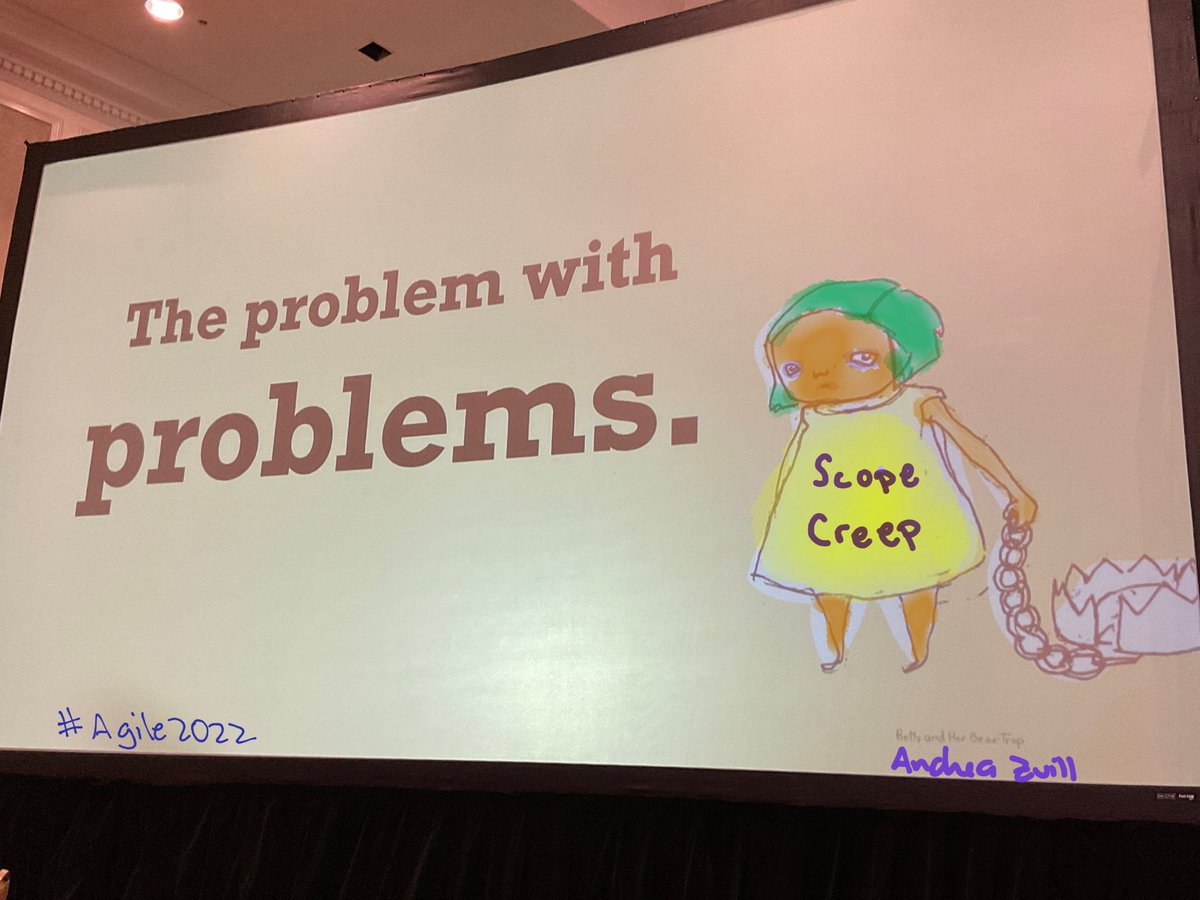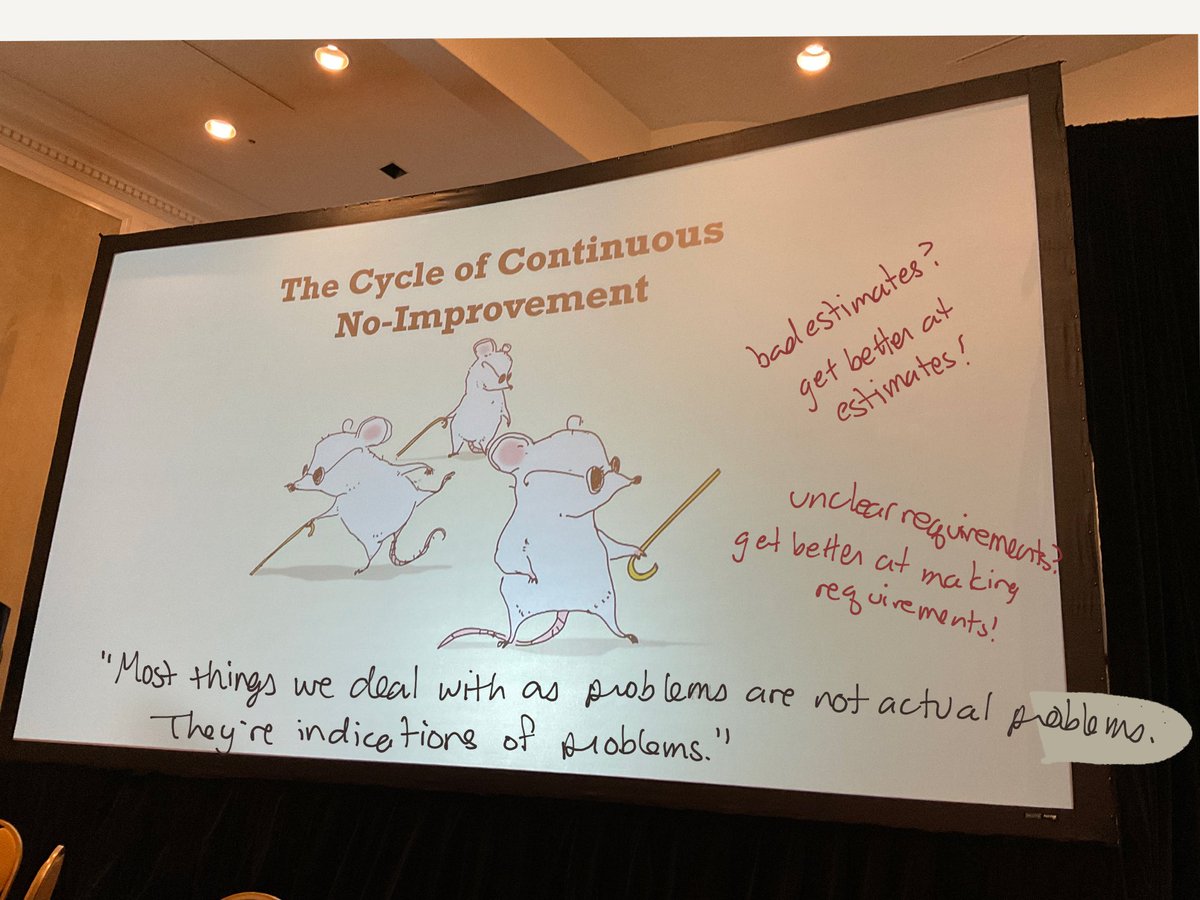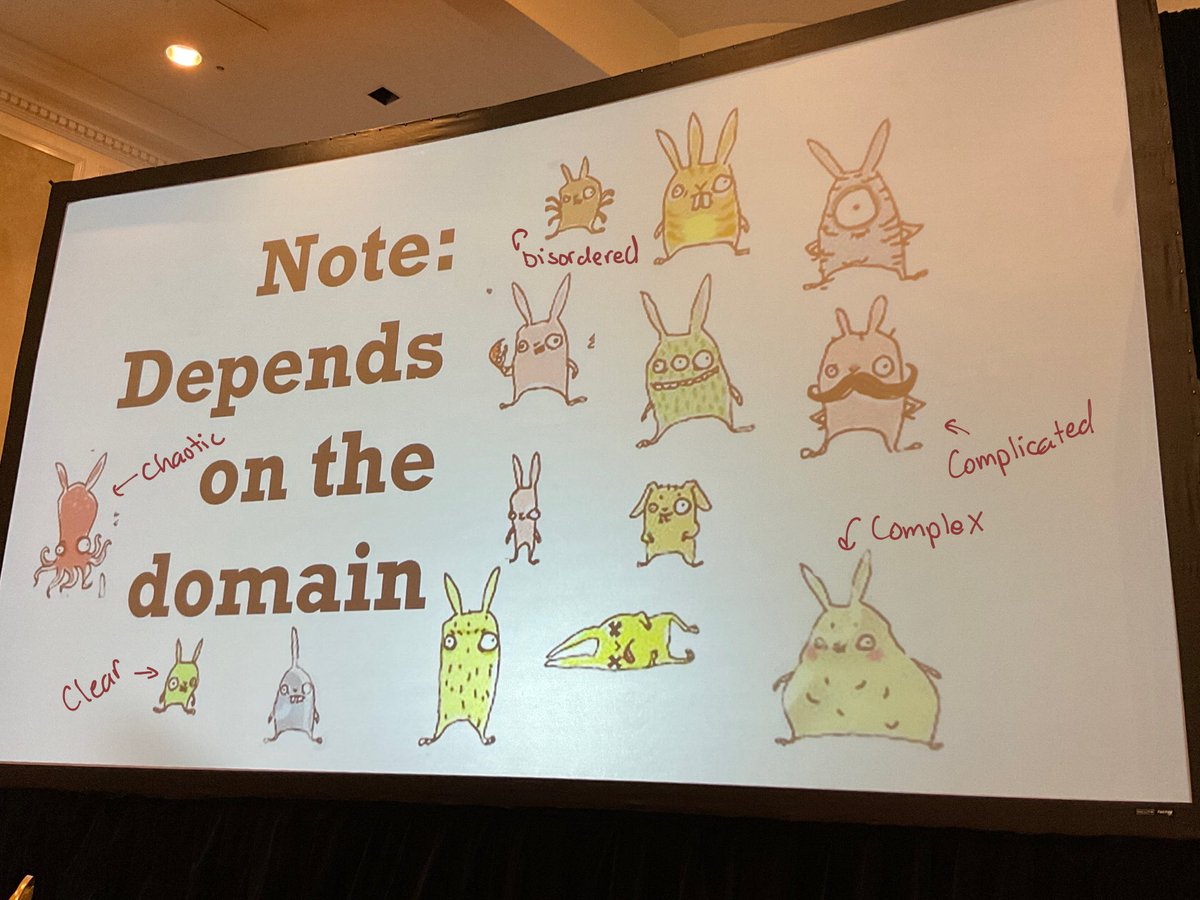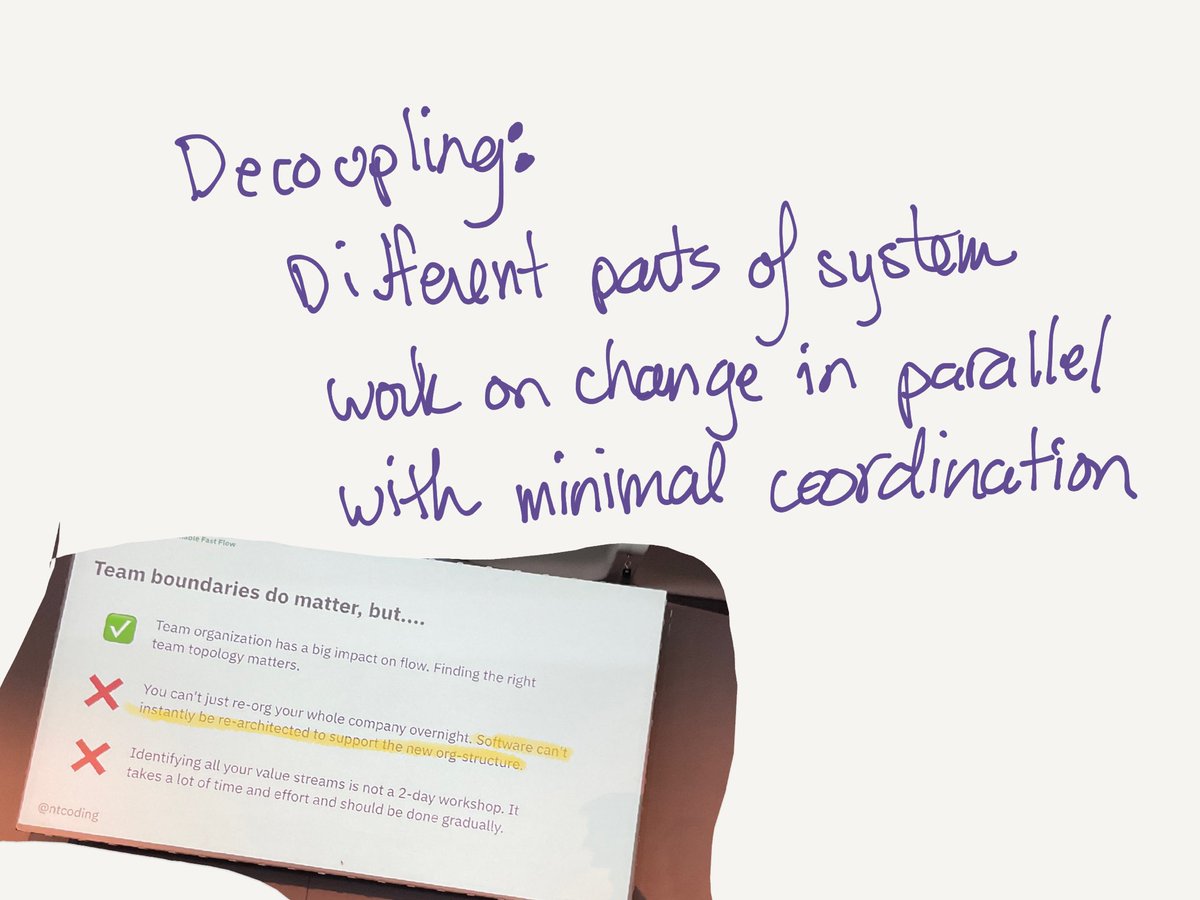
We have known how to build software for a while now, and the question is,
Why don’t we?
@bethcodes #Agile2022
Why don’t we?
@bethcodes #Agile2022
The alternative typically presented is structurelessness.
Let every team do exactly what it wants, whoever keeps doing it longer without getting fired wins the argument.
People don’t feel safe without structure.
@bethcodes
Let every team do exactly what it wants, whoever keeps doing it longer without getting fired wins the argument.
People don’t feel safe without structure.
@bethcodes
WE can build cultures.
MANAGEMENT can’t.
It is impossible to use hierarchy to impose autonomy.
@bethcodes #agile2022
MANAGEMENT can’t.
It is impossible to use hierarchy to impose autonomy.
@bethcodes #agile2022

Instead of asking people to be better, ask them to strategize on how to do better.
@bethcodes
#Agile2022
@bethcodes
#Agile2022
“A radical culture of culture building is the only way I’ve seen us approach the promise of agile.”
@bethcodes #agile2022
@bethcodes #agile2022
Learned helplessness means
small setbacks have
outsized impacts.
@bethcodes #agile2022
This leads to resistance to change.
small setbacks have
outsized impacts.
@bethcodes #agile2022
This leads to resistance to change.
Look for companies that make more money when their software is better.
Otherwise the incentives don’t align (on making quality software)
@bethcodes #agile2022
Otherwise the incentives don’t align (on making quality software)
@bethcodes #agile2022
Hierarchy is terrible at solving quality problems.
Authority can’t _make_ anyone do things.
They can only stop people from doing things.
They especially can’t make anyone do things they don’t have time or resources to do.
@bethcodes #agile2022
Authority can’t _make_ anyone do things.
They can only stop people from doing things.
They especially can’t make anyone do things they don’t have time or resources to do.
@bethcodes #agile2022

To develop norms of professionalism (in making good software, in building relationships, in conflict resolution),
we need sufficiency. Enough resources.
such as: “We never had a deadline that wasn’t imposed from outside the company.”
@bethcodes #agile2022
we need sufficiency. Enough resources.
such as: “We never had a deadline that wasn’t imposed from outside the company.”
@bethcodes #agile2022
How to scale planning and coordination:
avoid planning.
@bethcodes #agile2022
(Planning for several teams for six months is a crapton of overhead. Talking about this week is not.)
avoid planning.
@bethcodes #agile2022
(Planning for several teams for six months is a crapton of overhead. Talking about this week is not.)

Norms (the expectations by which a culture guides behavior of its members) are intrinsically motivated standardization.
but it takes new skills to resolve conflict this way (rather than appealing to authority)
@bethcodes
but it takes new skills to resolve conflict this way (rather than appealing to authority)
@bethcodes

Consensus doesn’t mean “everybody agrees.”
It means “Nobody objects.”
@bethcodes
It means you keep working until you find a solution that works for everybody.
It means that when somebody says “No!” you look deeper, dig into the reasons why.
It means “Nobody objects.”
@bethcodes
It means you keep working until you find a solution that works for everybody.
It means that when somebody says “No!” you look deeper, dig into the reasons why.
If somebody wants to game the system and use their veto power to “win,” ya gotta ask…
Why are we trying to win
instead of make software?
@bethcodes
Why are we trying to win
instead of make software?
@bethcodes

Cultural norms influence decisions in ways that are much more efficient than hierarchical coordination.
from @bethcodes #agile2022
from @bethcodes #agile2022

When the world feels out of control, humans reach for authoritarian hierarchies.
The choice we see is Chaos or Coercion.
but these are not the only options.
A suitable Culture can provide structure that’s more effective for everyone.
@bethcodes #agile2022
The choice we see is Chaos or Coercion.
but these are not the only options.
A suitable Culture can provide structure that’s more effective for everyone.
@bethcodes #agile2022

No one can tell you _what_ culture you need. We can only share a process of building culture, constantly building it, so that it always suits the people and the situation.
These are interactive techniques best learned through experience.
from @bethcodes
These are interactive techniques best learned through experience.
from @bethcodes
Successful culture:
“If we document it, people will do the things we did, instead of using the process and values that helped us find what to do in our situation”
@bethcodes
“If we document it, people will do the things we did, instead of using the process and values that helped us find what to do in our situation”
@bethcodes
People must have a choice
whether to participate in a culture
for the culture to work.
@bethcodes
#Agile2022
whether to participate in a culture
for the culture to work.
@bethcodes
#Agile2022
@bethcodes learned this stuff from meetings organized by anarchists. 

• • •
Missing some Tweet in this thread? You can try to
force a refresh








































